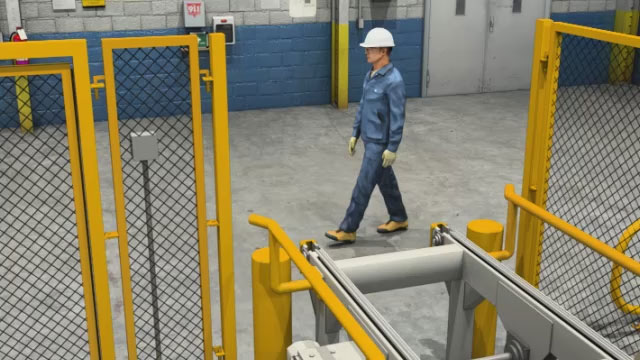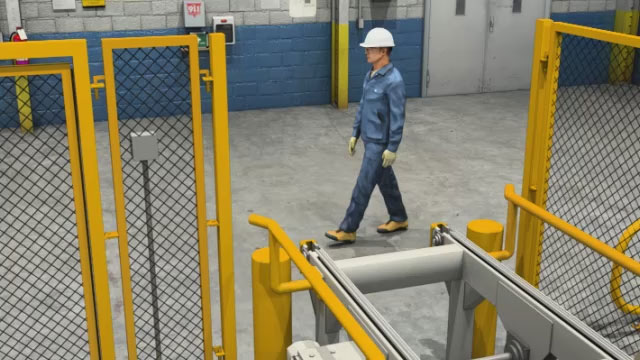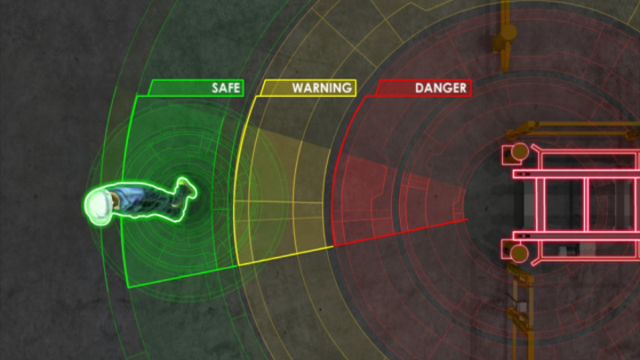




Conveyor Safety
Conveyors are involved in about 50 deaths in the U.S. every year. When used properly, conveyors can reduce workloads, make production more efficient, and prevent injuries that result from carrying materials manually. This course will discuss the most common types of conveyors and their hazards, the types of guarding around conveyors, general conveyor safety, and what to do during and after an emergency. Taking this course and understanding the hazards conveyors present will help keep you and your co-workers safe.
Request a demoCourse Details
Learning Objectives
By the end of this course, you will be able to:
- Identify the most common types of conveyors
- Identify the most common conveyor hazards
- Describe the different ways to guard conveyors (mechanical, electrical, location)
- Discuss key startup and operational safety procedures
- Differentiate between normal and emergency stop controls
- Discuss conveyor operation safety and guidelines for safely loading and unloading
- Describe how housekeeping, inspections, and maintenance support a safe workplace
Specs
| Course Level | Intermediate |
| Languages | English, Portuguese, French, Polish, Russian |
| Compatibility | Audio, Video, MobileReady, Responsive |
| Based on: | Industry Standards and Best Practices |
Key Questions
What are the different types of conveyors?
The four most common types of conveyors are Roller conveyors, belt conveyors, chain conveyors, and screw conveyors.
What are the safety hazards when working with conveyors?
The hazards associated with conveyors are pinch or nip points, shear points, spill points, passageways, power transmission points, and loading and unloading points.
What are the types of machine guards used with conveyors?
This course discusses mechanical and electrical guards, the differences between the two, where they are used, and why they are needed.
What are some safety tips when getting ready to start a conveyor?
Never wear jewelry, loose clothing, or anything that could get caught in a conveyor. Keep long hair pulled back or secure. Take note of audible alarms or flashing lights. Only trained operators should start the conveyor. The operator should inform all coworkers in the area that the conveyor is about to start and make sure everyone is a safe distance away from the conveyor.
What is the purpose of the Emergency Stop button when there is a regular stop button?
The Emergency stop button (e-stop button) is designed to immediately stop the conveyor in case of an emergency. It helps prevent injuries, product damage, equipment damage, and damage to the facility. The e-stop button or in some cases pull-cord should be clearly marked and located at hazardous spots around the conveyor like loading, unloading, and discharge areas.
What are some operational safety tips when operating or working near conveyors?
Make sure all safety guards and devices are in place. Never put materials on the conveyor that the conveyor is not intended to carry. Never overload a conveyor. Never climb on, sit on, stand on, walk on, or ride on a conveyor unless given permission by the supervisor. Never reach into, under, or across a conveyor. Never touch moving parts of a conveyor. Do not touch items moving on the conveyor unless you are loading or unloading.
What are some operational safety tips when operating or working near conveyors?
Make sure all safety guards and devices are in place. Never put materials on the conveyor that the conveyor is not intended to carry. Never overload a conveyor. Never climb on, sit on, stand on, walk on, or ride on a conveyor unless given permission by the supervisor. Never reach into, under, or across a conveyor. Never touch moving parts of a conveyor. Do not touch items moving on the conveyor unless you are loading or unloading.
How can injury be preventing when loading or unloading a conveyor?
Injuries can be reduced by always loading or unloading items at approved areas. Never load or unload over railings, guards or near motors. Stand close enough to the conveyor to avoid muscle or back strain but far enough to avoid leaning on or touching the conveyor. Use lifts, tables, or carts that are at or near the same height as the conveyor. Position your body to reduce twisting or bending. Keep fingers and body parts away from all nip points. Adjust lifts to the level as the conveyor. Report any problems with how the conveyor is operating.
What is involved in the regular conveyor inspection?
Before inspecting a conveyor follow your facility’s lockout Tagout procedure to safely shut down the conveyor. Inspect the entire conveyor before start-up. Inspect and test alarms, emergency stops, and guards. Also inspect for unusual noises or vibrations, unexpected changes in speed, and improper belt tension.
Sample Video Transcript
When an emergency stop has been activated, the conveyor should stop immediately. Once the conveyor is stopped, then the emergency situation can be dealt with. If workers are injured, follow your company’s emergency procedures for first aid or summon qualified medical care as quickly as possible. Immediately following any emergency, the conveyor should be locked out and tagged out. The conveyor should then be inspected to identify the cause of the stoppage and be corrected before it is restarted. Before the conveyor is restarted, the E-stop may need to be reset to its normal operating position.
Additional Resources
- NY Committer for Occupational Safety & Health (NYCOSH) – www.nycosh.org
- NYCOSH Safety Factsheet – http://nycosh.org/uploads/safety_hazards/FS%20Conveyors2.pdf
- American Society of Safety Engineers (ASSE) – www.asse.org
- ASSE Publications – http://www.asse.org/professionalsafety/
- ASSE Machine Safety – http://www.asse.org/professionalsafety/pastissues/049/11/011104as.pdf
- Cisco-Eagle – www.cisco-eagle.com
- Cisco-Eagle Articles – http://www.cisco-eagle.com/catalog/c-3356-conveyor-safety-articles-and-information.aspx
Course Applies To
Demos + Pricing
Learn more about our courses, get pricing, and see our platform.











